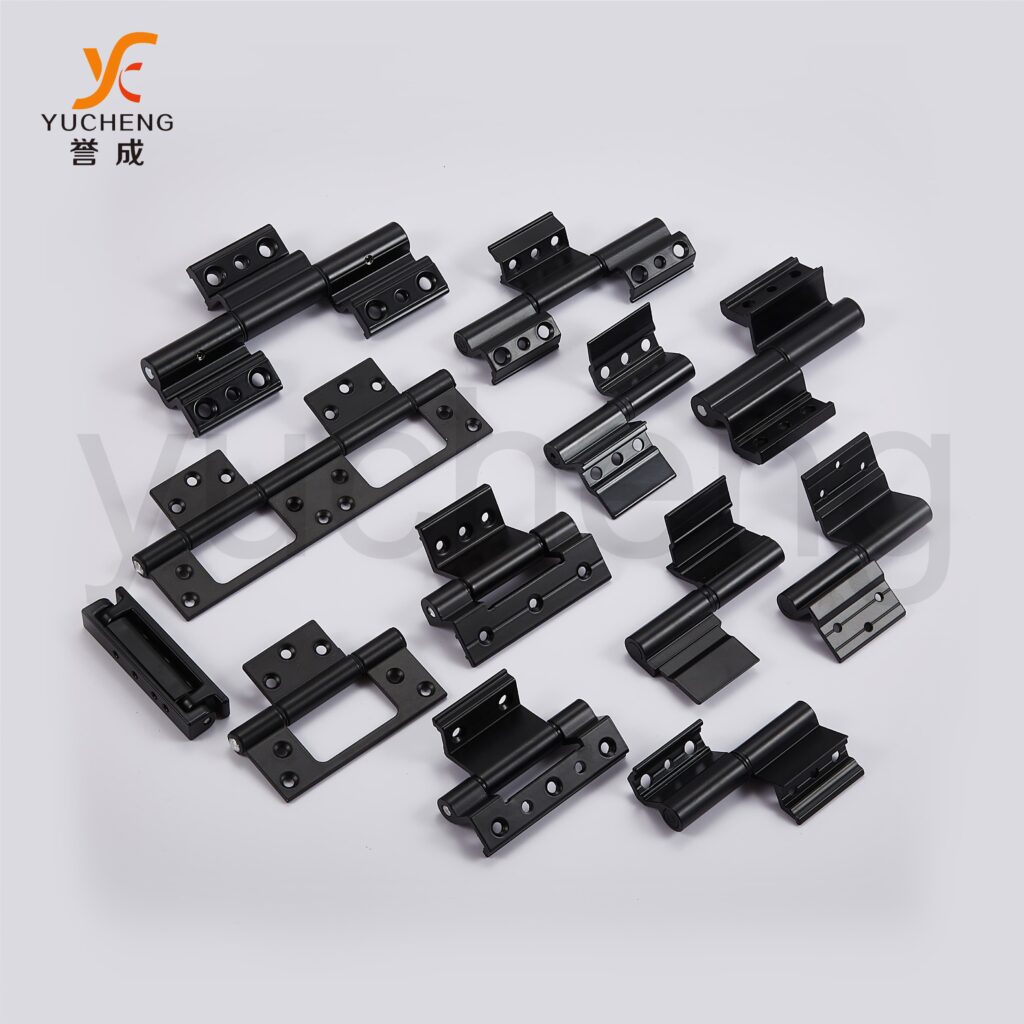The manufacturing process of aluminum alloy window hinges typically involves the following steps:

1. Raw Material Preparation
- Aluminum Alloy Material: Select appropriate aluminum alloy materials, commonly 6063, 6061, etc. These materials have good corrosion resistance and strength.
- Auxiliary Materials: Such as screws, springs, plastic components, etc.
2. Cutting
- According to the hinge design drawings, the aluminum alloy profiles are cut. This is usually done using precise cutting machines or saws to ensure the size and shape meet the required specifications.
3. Milling and Drilling
- Milling: The milling machine is used to precisely process the external shape and details of the hinge to ensure smooth and accurate connections between the parts.
- Drilling: Holes are drilled according to the hinge structure design to facilitate the installation of screws or bearings. The drilling positions must be precise to ensure proper functionality after installation.
4. Die-Casting or Extrusion Forming (if needed)
- For more complex shapes, aluminum alloy hinges may be made through aluminum alloy die-casting or extrusion processes, where the aluminum is melted and formed through molds.
- This method can improve production efficiency, especially in large-scale manufacturing.
5. Surface Treatment
- Anodizing: To enhance corrosion resistance and oxidation resistance, anodizing treatment is usually performed. This process forms a protective film on the surface of the hinge, improving its durability and appearance.
- Spray Coating or Powder Coating: If a specific color or appearance is required, spraying or powder coating can be applied. This provides an additional protective layer, improving the hinge’s weather resistance.
- Polishing: For certain high-end hinges, polishing treatment may be performed to make the surface smooth and enhance aesthetics.
6. Assembly
- The various parts of the hinge are assembled together. This typically includes hinge plates, bearings, springs, and fastening screws.
- Ensure that each part is securely installed, and the hinge can open and close smoothly during operation.
7. Quality Inspection
- Inspect the size, shape, and surface quality of the hinge to ensure there are no defects or scratches.
- Test the hinge’s load-bearing capacity and durability to ensure it can function effectively in real-world applications.
- Perform open-and-close tests to confirm that the hinge operates smoothly and flexibly.
8. Packaging and Shipping
- Hinges that pass quality inspection are packaged, typically according to customer requirements or product specifications, either individually or in bulk.
- Use appropriate packaging materials (such as foam, cardboard, etc.) to ensure the hinges are not damaged during transport.
Through these steps, the aluminum alloy window hinge is completed and ready for market application.

Hi, this is a comment.
To get started with moderating, editing, and deleting comments, please visit the Comments screen in the dashboard.
Commenter avatars come from Gravatar.